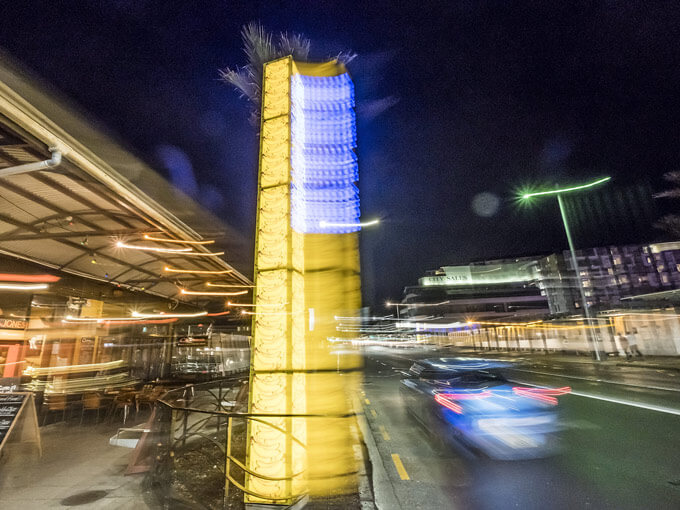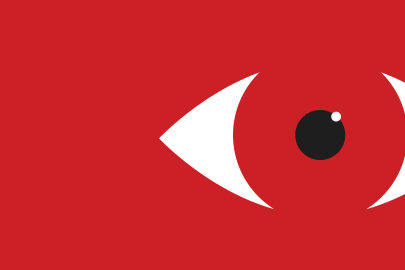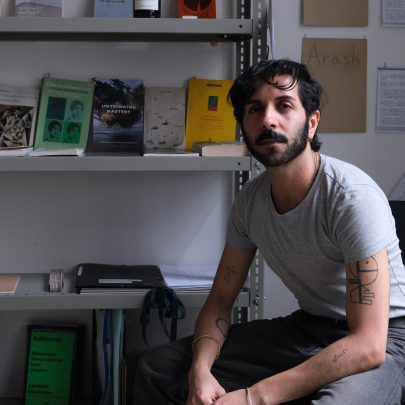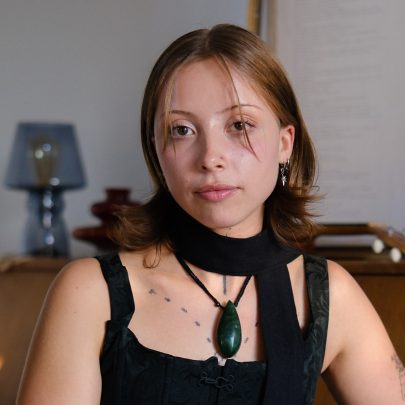Nov 23, 2018 Art
Want to make Auckland a city of the future? Start by giving it back to the artists.
Auckland’s supposed urban visionaries are joined in a staggering naivety: a belief that urban regeneration and gentrification are the same thing. The inner city is now for the rich — people with capital — while everyone else is pushed out to the margins. New Zealanders hate the idea that we’re a class-based society, and yet central Auckland is now completely stratified along class lines.
Caught up in this urbanist train wreck are the creative classes: the musicians, writers and artists who keep the place alive and vibrant. Things have been going downhill for a while, but the issue got very real for me when I witnessed a recent border crossing, both real and symbolic: the opening of Tesla’s new showroom near the Ponsonby end of Karangahape Rd. In other words, the expensive car dealerships have breached the Newton intersection and entered artist territory.
This might initially seem a silly example, but we should be worried about what it represents. Historically, the area that encapsulates Elam School of Fine Arts, Upper Queen St, all of K’ Rd, and Symonds St up to Eden Tce has been Auckland’s beating contemporary heart: not the home of high-cultural, council-funded institutions for old people, but the place you’d find artist-run spaces and collectives, musicians’ rehearsal rooms and small-gig venues, and shared flats where young, creative people could afford to live.
For the visual arts in particular, that area has played an enormous role in fostering our best artists. Everyone who became someone in the 1990s showed at K’ Rd artist-run space Teststrip. A generation later, Gambia Castle did the same thing, giving us the likes of Simon Denny, Nick Austin and Kate Newby. Newcall briefly and successfully took over a floor of what is now Skhy Apartments at the top of Khyber Pass Rd. And most recently, Fuzzy Vibes created a K’ Rd platform for art students and recent grads.
To the general public, the situation is deceptive: walk along K’ Rd and it seems like there are plenty of art galleries. But almost all of them are art dealers (even the excellent addition Mokopopaki is a commercial operation, albeit with a tikanga Maori approach). Then there’s the explosion of auctioneers in the area (Webb’s has recently moved to Normanby Rd), increasingly catering to a clientele that wants the investment assurances of the secondary art market, rather than supporting someone young and new.
This is not just nostalgia for what K’ Rd once was. It’s an argument about class and one of its correlates — our collective creative health. The spaces where young artists can afford to live, work, make and show are the keys to the ecosystem. They’re like plankton; take them out and the whales will die, too.
So where are young artists going? Some are still heading overseas to try their luck, which is a good thing. In 2016, Radio New Zealand’s The Wireless did a piece about artists moving to Dunedin because of cheap rents, and last year, I wrote for Home about the same phenomenon, only in Whanganui.
But what about the ones who stay? In 2017, Wellington’s Adam Art Gallery staged an emerging-artists exhibition called The Tomorrow People. I asked some of the Auckland-based “tomorrow people” how much they pay for their studios. The answer: they don’t have studios. They can barely afford to pay for their flats. Some high-performing graduates are getting around this by enrolling in art-school doctorates, because these often come with scholarships and studio spaces. But this also means they’re absorbed into a university system that they should really be kicking against.
The worrying thing is that the people in power either don’t know how tough things are, or don’t care. Instead, conversations about the city’s cultural life focus on daft new waterfront propositions like underground cultural centres with fake volcanoes, and sunken sports stadiums. Or there’s councillor Chris Darby’s thrill at the thought Auckland could spend a fortune on a public artwork by Len Lye: a Christchurch-born artist who died in the US in 1980, had little or no relationship with Auckland, and whose works are being engineered posthumously by a foundation in his name.
If you can’t see that Tesla opening on K’ Rd is about more than electric cars, I can’t help you.
Neither has anything to do with regenerating Auckland’s cultural life, and everything to do with entertaining its ageing middle classes. How about building subsidised or rent-controlled studio and rehearsal spaces instead? And forcing developers to do the same when they get consents for new apartment blocks? Or giving the money earmarked for terrible public sculptures to emerging-artist grants and artist-run spaces? More radically, we could start thinking of creative people as key workers and pay them a basic income to stay in the city. Institutions like the Auckland Art Gallery — the whales in the ecosystem — could also do far more to advocate for emerging artists.
Why? Because, with all of Auckland’s so-called improvements, an essential part of the city is dying. If you can’t see this, and you can’t see that Tesla opening on K’ Rd is about more than electric cars, I can’t help you. But nor can I protect you from what’s coming. Because here is the other truth about the future: very soon, you will be obsolete — and it’s companies like Tesla and the Silicon Valley men behind them who will make sure of it.
In an April op-ed for Wired, tech investor Tim Hulme wrote how and what we teach our children: “Creativity will increasingly be the defining human talent. Our education system should emphasise the use of human imagination to spark original ideas and create new meaning. It’s the one thing machines won’t be able to do.”
Even the tech gurus know that artists are the keys to our humanity, and our survival. So think of me as your coalmine canary, because when I stop chirping about Auckland’s contemporary art scene, it means there’s a much bigger problem. If you really want to make this a great place to live, give it back to the people who bring it to life.
This article was first published in the September – October 2018 issue of Metro.
Follow Metro on Twitter, Facebook, Instagram and sign up to the? weekly email






